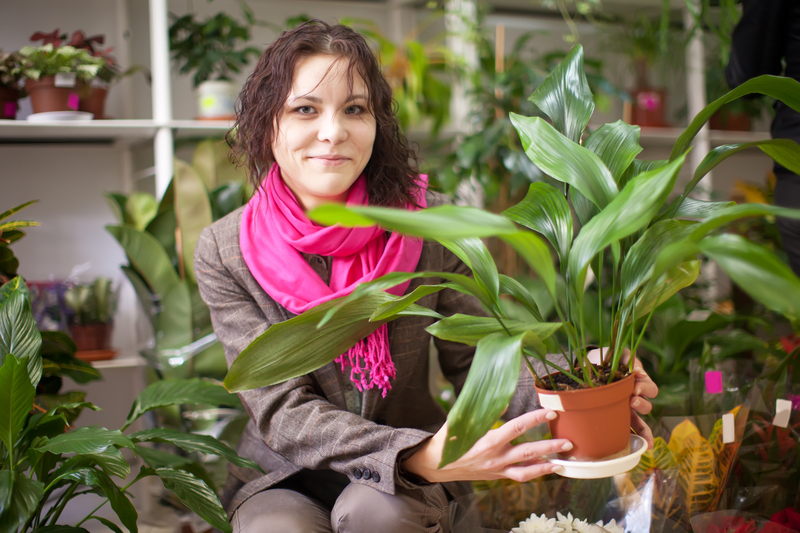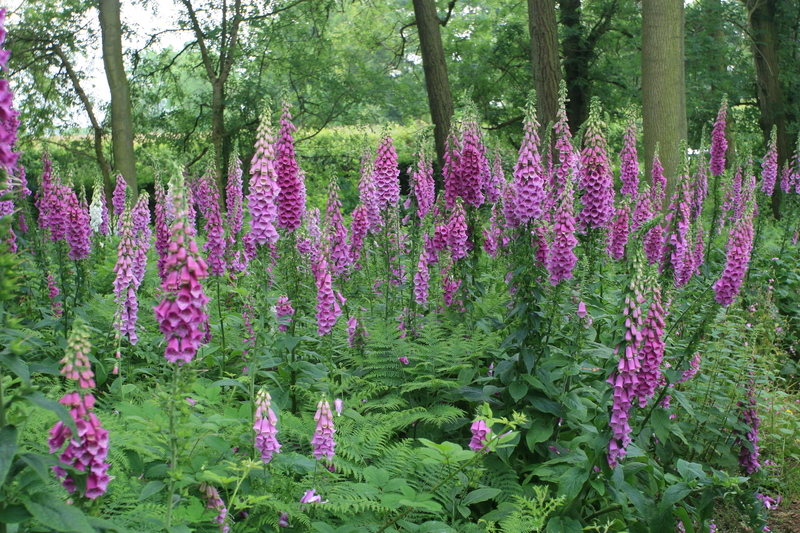Immerse in Nature: Step into Herb Gardening
Posted on 01/09/2025
Immerse in Nature: Step into Herb Gardening
Discover the beauty of connecting with nature and cultivate a thriving herb garden right at your doorstep. Herb gardening is more than just a pastime--it's a journey into sustainable living, flavorful culinary experiences, and holistic wellness. Whether you're a seasoned gardener or new to digging in the soil, this comprehensive guide will show you how to immerse in nature through the art and science of growing your own herbs.
Why Start Your Own Herb Garden?
Imagine plucking fresh basil for your pizza, inhaling the invigorating scent of mint, or preparing a calming tea with homegrown chamomile. Herb gardening brings the natural world closer, offering countless benefits to your lifestyle and wellbeing:
- Culinary Freshness: Harvest vibrant flavors that enhance any meal.
- Health & Wellness: Grow natural remedies and enjoy antioxidants, vitamins, and essential oils.
- Eco-Friendly Living: Reduce your carbon footprint and support pollinators like bees and butterflies.
- Therapeutic Connection: Gardening soothes stress, cultivates patience, and boosts mental health.
- Personalized Aesthetic: Create a beautiful, fragrant space that reflects your taste and style.

Choosing the Perfect Space for Your Herb Garden
Step into herb gardening by selecting the ideal location. While herbs are adaptable, the right environment ensures lush, healthy growth. Consider these key elements when choosing your herb garden spot:
- Sunlight: Most herbs require at least 6 hours of direct sunlight daily. Windowsills, balconies, patios, and backyards work well.
- Soil Quality: Herbs thrive in well-draining, nutrient-rich soil. Amend with compost or organic fertilizer.
- Accessibility: Place the garden somewhere convenient to water, tend, and harvest easily.
- Protection: Shield herbs from harsh winds and excessive rain if possible.
Even if you're short on space, indoor herb gardens using pots, hydroponic setups, or vertical planters offer abundant possibilities.
Selecting the Best Herbs for Your Garden
As you embark on your journey to immerse in nature with herb gardening, start by choosing the right plants. Here's a list of beginner-friendly and popular herbs to consider:
Easy-to-Grow Herbs
- Basil: Sweet and savory, perfect for Italian dishes.
- Mint: Vigorous and aromatic--great for drinks and desserts. Grow in containers to prevent spreading.
- Rosemary: Woody, drought-tolerant, pairs well with roasted meats.
- Parsley: Curly or flat-leaf, a versatile kitchen staple.
- Chives: Mild onion flavor, ideal for garnishes.
- Oregano: Essential for Mediterranean cuisine.
- Thyme: Earthy and robust, beautiful in mixed plantings.
- Cilantro: Fresh and zesty, key for salsas and curries.
Tip: Consider your local climate and the herbs you use most in cooking. Mix perennials (rosemary, thyme, oregano) with annuals (basil, cilantro) for a garden that thrives all year.
Planning Your Herb Garden: Design & Layout
Whether you're crafting a lush backyard escape or a windowsill display, thoughtful planning is crucial. Herb garden design can be simple or elaborate, reflecting your personality and needs.
Popular Herb Garden Styles
- Raised Beds: Improved drainage and easier maintenance; good for multiple herb varieties.
- Container Herb Gardens: Perfect for patios or apartments; easy to move and arrange.
- Kitchen Windowsill Gardens: Fresh herbs at your fingertips, indoors year-round.
- Spiral or Knot Gardens: Add visual interest and maximize space for many herb types.
Keep herbs with similar light and water needs together. Taller herbs (like rosemary) can go at the back, with shorter ones (like parsley and thyme) at the front for easy access.
Sowing, Planting, & Propagating Herbs
Ready to get your hands dirty? There are a few ways to start your herb gardening journey:
Seeds
- Sow indoors in trays or directly outdoors after last frost.
- Follow the recommended depth and spacing for each herb variety.
- Keep the soil moist but not waterlogged for successful germination.
Seedlings & Transplants
- Purchase young plants from a nursery or local market for a head start.
- Gently ease them out of pots, loosen roots, and plant at the same depth as in containers.
Cuttings & Division
- Some herbs (like mint and oregano) can be propagated via stem cuttings placed in water or moist soil until rooted.
- Perennial herbs can be divided to expand your patch and share with friends.
Care and Maintenance: Nurturing a Healthy Herb Garden
- Watering: Herbs generally prefer evenly moist, well-drained soil. Overwatering can cause root rot, so let the top inch dry out between waterings.
- Feeding: Lightly feed with diluted organic fertilizer during the growing season for lush foliage.
- Pruning: Regularly trim stems to encourage bushier growth and prevent early flowering (bolting), which can reduce flavor.
- Pest Management: Herbs are less prone to pests, but watch for aphids, mites, and snails. Hand-picking or a gentle spray of soapy water usually suffices.
- Weeding: Keep the area weed-free to avoid competition for nutrients and resources.
Mulching with straw or mulch helps retain moisture and reduces weeds, especially in outdoor gardens.
Harvesting: Reaping Nature's Rewards
To truly immerse in herb gardening, learn to harvest your plants properly:
- Morning Harvest: Pick herbs in the morning after dew dries but before the sun gets hot. Oils, and therefore flavor, peak at this time.
- Selective Cutting: Snip only what you need, always leaving enough plant behind for regrowth.
- Regular Use: Frequent harvesting encourages new shoots and bushy plants. Remove flowers from annual herbs like basil to maintain flavor.
Drying & Storing Herbs
- Hang small bundles upside down in a cool, dry, and well-ventilated spot for preservation.
- Store dried herbs in airtight containers, away from sunlight and moisture, for several months of vibrant flavor.
- Alternatively, freeze chopped herbs in olive oil or water using ice-cube trays for quick add-ins to recipes.
Herb Gardening for Culinary, Medicinal, and Decorative Uses
The art of stepping into herb gardening brings far-reaching benefits and endless uses:
Culinary Magic
- Add fresh basil, oregano, and parsley to pasta dishes.
- Infuse mint into cocktails or desserts for a refreshing flavor.
- Brighten stews with rosemary or thyme, or top soups with fresh chives.
Natural Remedies
- Chamomile and lavender for calming teas and sleep aids.
- Mint and lemon balm for digestive support.
- Comfrey and calendula as healing salves for skin irritations.
Decorative and Aromatic Touches
- Include herbs in flower arrangements for fragrance and texture.
- Grow in attractive pots for windowsills or patios as natural home decor.
- Use dried herb sachets as air fresheners or moth deterrents in closets.
Seasonal Care for Your Herb Garden
Pamper your herbs throughout the year for lasting performance:
- Spring: Sow new seeds, divide perennials, and refresh soil.
- Summer: Monitor watering needs, harvest often, and watch for pests.
- Autumn: Harvest heavily, dry and preserve herbs, mulch beds before winter.
- Winter: Bring sensitive herbs indoors or use cloches for protection. Start new seeds on windowsills.
Tips for Sustainable and Organic Herb Gardening
Deepen your connection with nature by adopting eco-conscious gardening methods:
- Use Compost: Enrich soil naturally and reduce waste.
- Rainwater Collection: Capture and reuse rainwater for irrigation.
- Natural Pest Controls: Attract ladybugs, use neem oil, or companion plant to limit harmful insects.
- Avoid Chemical Fertilizers or Pesticides: Opt for organic alternatives for healthier herbs and a cleaner planet.
The Therapeutic Benefits of Herb Gardening
Cultivating an herb garden is as much about nurturing your spirit as it is about growing plants. Studies show that gardening can reduce anxiety, boost mood, and enhance concentration. Hands-on connection with the earth fosters a sense of accomplishment and purpose.
- Mindful activities such as sowing seeds, watering, and harvesting allow for relaxation and stress relief.
- Observing the growth cycle reminds us of patience and the rewards of nurturing.

Common Questions about Herb Gardening
Can I grow herbs indoors all year round?
Yes! Many herbs like basil, parsley, and chives thrive indoors under sufficient sunlight or with grow lights, allowing for fresh flavors throughout every season.
What herbs grow well together?
Group herbs by water and sunlight needs--Mediterranean herbs (rosemary, thyme, oregano, sage, lavender) prefer drier soil, while basil, parsley, and cilantro enjoy more moisture.
How do I prevent my herbs from bolting?
Bolting (early flowering) usually occurs during hot weather or stress. Keep the soil consistently moist and pinch off flower buds as soon as they appear to prolong leaf production.
Conclusion: Embrace Nature Through Herb Gardening
Step into herb gardening and unlock a world of possibility at your fingertips. From the pure joy of cultivating life to the endless benefits in your kitchen and wellness routine, herb gardening truly enables you to immerse yourself in nature. Whether you have a sprawling yard or a small sunny window, the chance to nurture, harvest, and enjoy nature's green gifts is within your reach. Start today, and your garden will reward you in flavor, health, and inner peace for years to come.



